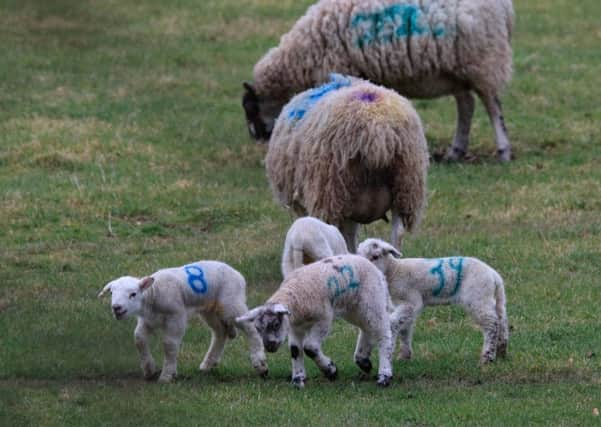New lamb age rule could be worth millions to sheep industry
This article contains affiliate links. We may earn a small commission on items purchased through this article, but that does not affect our editorial judgement.


Plans to adopt a fixed cut-off date of June 30 to age lambs instead of checking teeth have now been confirmed by the Government after years of campaigning by farming organisations.
Both producers and the supply chain stand to benefit from the switch through time savings and more accurate valuations of lambs when they at put forward for processing.
Advertisement
Hide AdAdvertisement
Hide AdIndustry groups hailed the result of working together, saying the victory demonstrates what can be achieved when different interest groups, backed by their members, pull in the same direction.
The new cut-off date will be implemented in time for June 2019 and the National Farmers’ Union (NFU) said it will provide a much simpler and more accurate way for farmers, market operators and abattoir operators to determine whether a lamb is older than 12 months and whether the carcass needs to be split to remove the spinal cord.
Richard Findlay, the NFU’s livestock board chairman, said: “The NFU and other industry organisations, including those representing the devolved nations, have long been urging government to implement a simpler and more accurate system of ageing lambs.
Advertisement
Hide AdAdvertisement
Hide Ad“We welcome the news of a cut-off date as it will mean no mouthing of sheep and no splitting of carcasses, which can unnecessarily devalue carcasses by as much as 40 per cent, before the 30th June.”
Mr Findlay, who runs a hill flock at his farm in Westerdale near Whitby, added: “This change will enable the industry to cease dentition checks entirely, providing a far more precise way to age lambs at the time of slaughter and potentially adding millions of pounds of value to the industry.”
The NFU has campaigned over many years for the rule change and recently worked with the National Sheep Association to provide evidence to the Government that supported the June cut-off date.
Phil Stocker, chief executive of the National Sheep Association, hailed the decision by the Department for the Environment, Food and Rural Affairs this week as “a major step forward” for the sheep industry at last.
Advertisement
Hide AdAdvertisement
Hide Ad“Finally, in 2019, the UK sheep industry will be able say goodbye to toothing old season lambs as a way of determining age and whether carcasses need to be split,” Mr Stocker said.
“As from 2019 Ministers have agreed that we will move away from tooth eruption to a set calendar date of the 30th June, before which no lambs will need to be checked or spilt, and after which all old season lambs will need to split and with SRM (Specified risk material) removed.
“This is a major step forward that follows some four years of intensive data gathering and positioning by NSA and NFU and with the involvement of all relevant industry bodies.”
He heralded that partnership, saying: “It’s an example of what can be achieved to benefit the industry by organisations working together, and an example too of what can be done through constructive and supportive working between industry and regulators.
Advertisement
Hide AdAdvertisement
Hide Ad“We estimate that checking for tooth eruption has cost the UK sheep industry some £24m a year in time and reduced value.
“It’s an imprecise method that has led to uncertainty and has made it difficult for finishers to plan buying and feeding regimes.”
The new rule means that from 2019 the move to a date cut off will provide real certainty, allow finishers to plan, and should minimise the numbers of lambs that require splitting, the NSA said.
Mr Stocker said he believed the new regulation would be smoothly adopted.
Advertisement
Hide AdAdvertisement
Hide Ad“In theory there may be a risk of a final surge of lambs towards the end of June but in practice the industry will have plenty of time to finish lambs and will be aware of the risks of leaving too many too late,” the sheep industry chief said.
“In addition, many of the larger abattoirs will make the switch to new season lamb well in advance of this end of June cut-off date.”
All that remains is for the final details of the implementation of the rule changed to be decided, Mr Stocker said.
“In our final discussions with Defra and the Food Standards Agency (FSA) we stressed the need for a decision during this autumn so that the industry can make informed decisions over sheep buying and grazing plans and the next steps will now see industry working with Defra, devolved administrations, and FSA to agree the final implementation details.”